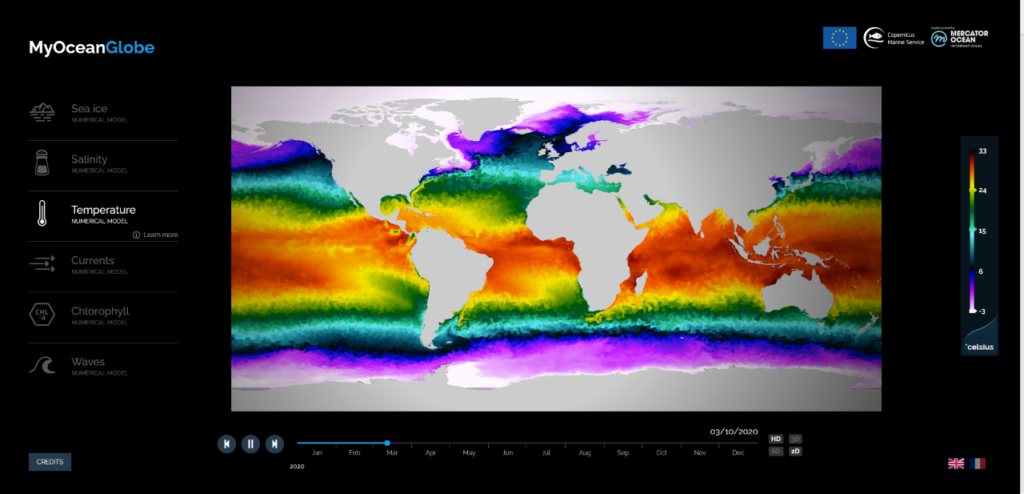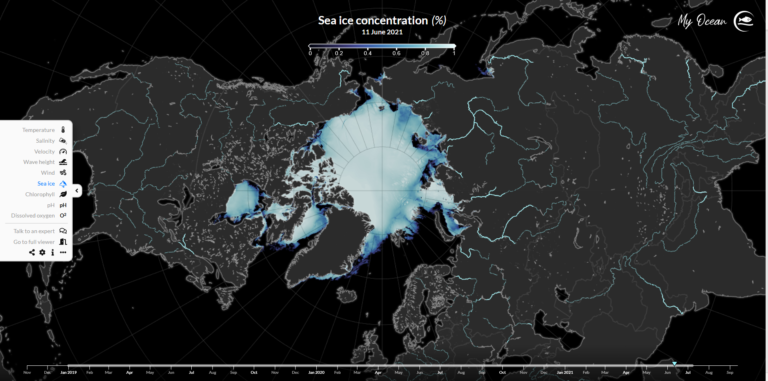The Copernicus Marine Service (CMEMS) has revealed the launch of its latest ocean viewer, MyOcean Light, which has been designed to offer a comprehensive view of relevant ocean indicators to provide first insights into the complex field of ocean monitoring.
The tool enables non-expert users to explore up-to-date data of nine different variables – temperature, salinity, water velocity, wave height, wind, sea ice, chlorophyll, pH, and dissolved oxygen – and how they have changed since January 2019.
CMEMS, which is implemented by Mercator Ocean International on behalf of the European Commission, monitors the seas and oceans on a regular basis and provides authoritative information on different variables, indicating their current state.
MyOcean Light was created to make this information available for the broader public and to give non-expert users the ability to deepen their understanding of the oceans. The website is freely accessible and is linked directly to CMEMS’ product catalog and therefore offers historical and near-real-time data, as well as forecasts of the different variables.
MyOcean Light builds on the expert version, MyOcean Pro, which was launched in September 2020. The professional viewer is designed for expert users from the science sector and provides direct access to more than 300 Copernicus Marine data products with hundreds of data subsets and many possibilities for various data calculations.
To assist students in gathering information on the world’s oceans and support the educational sector, CMEMS has also launched an instructional version of the ocean viewers that is not directly linked to its data catalog. Instead, this version, MyOcean Learn, focuses on educational material such as instructive videos, 3D animations and text, to support students and teachers by providing quality-assured information about the workings of the oceans.
Fabrice Messal, training and education manager, Mercator Ocean International, said, “We developed MyOcean Light to fulfil our commitment to raise public awareness of the ocean to help people increase their understanding about these important regions of our planet. For that reason, we also dedicated resources to launch MyOcean Learn, the educational version of the viewer, for which an offline version is already shared with some museums and aquariums.
“With our two new online viewers, we hope that we can enable businesses as well as the broad public – also teachers, parents and children – to get better access to our data and support them in building an increased understanding of the ocean in order to protect it,” he added.

Find out more about the Copernicus Marine Ocean Viewers here.



